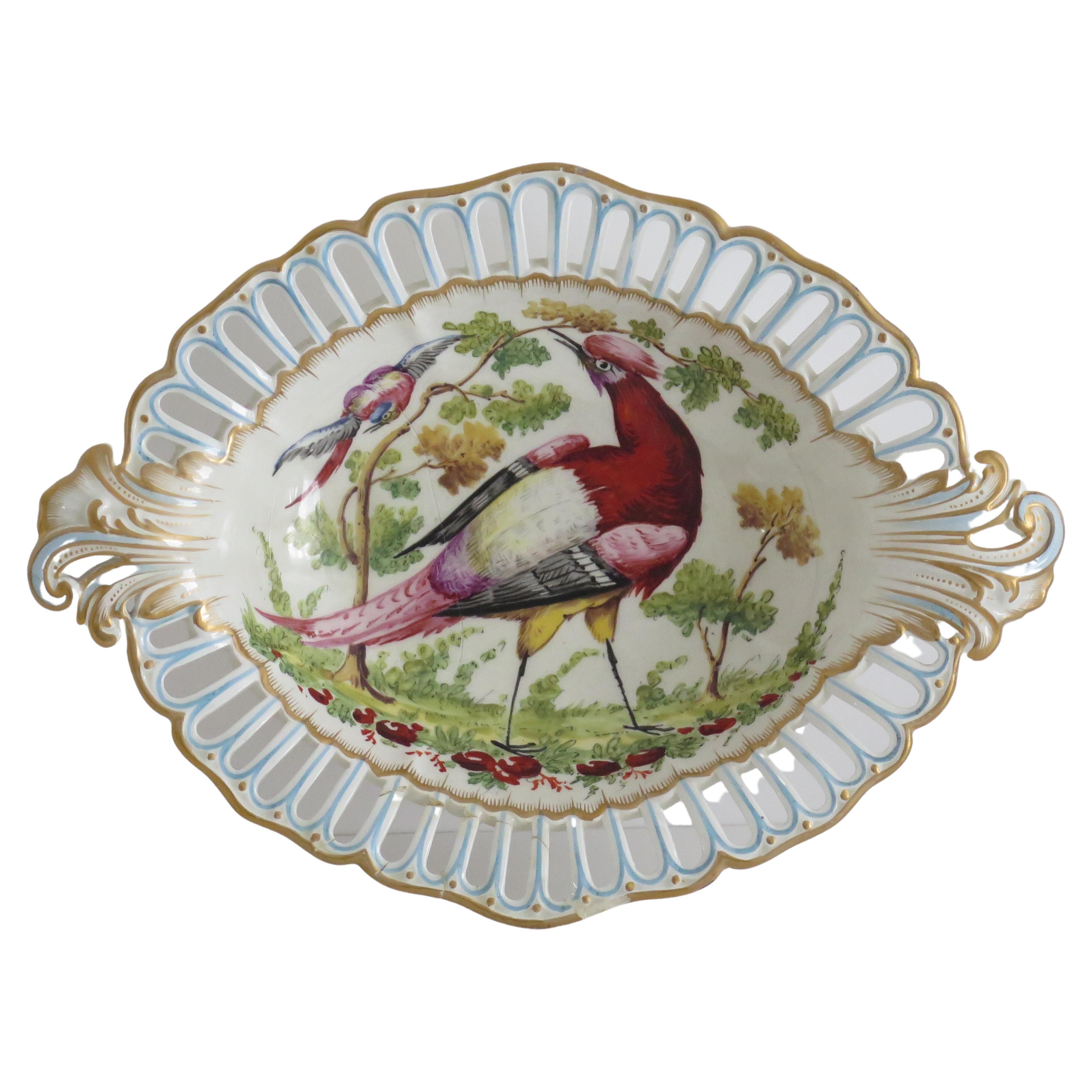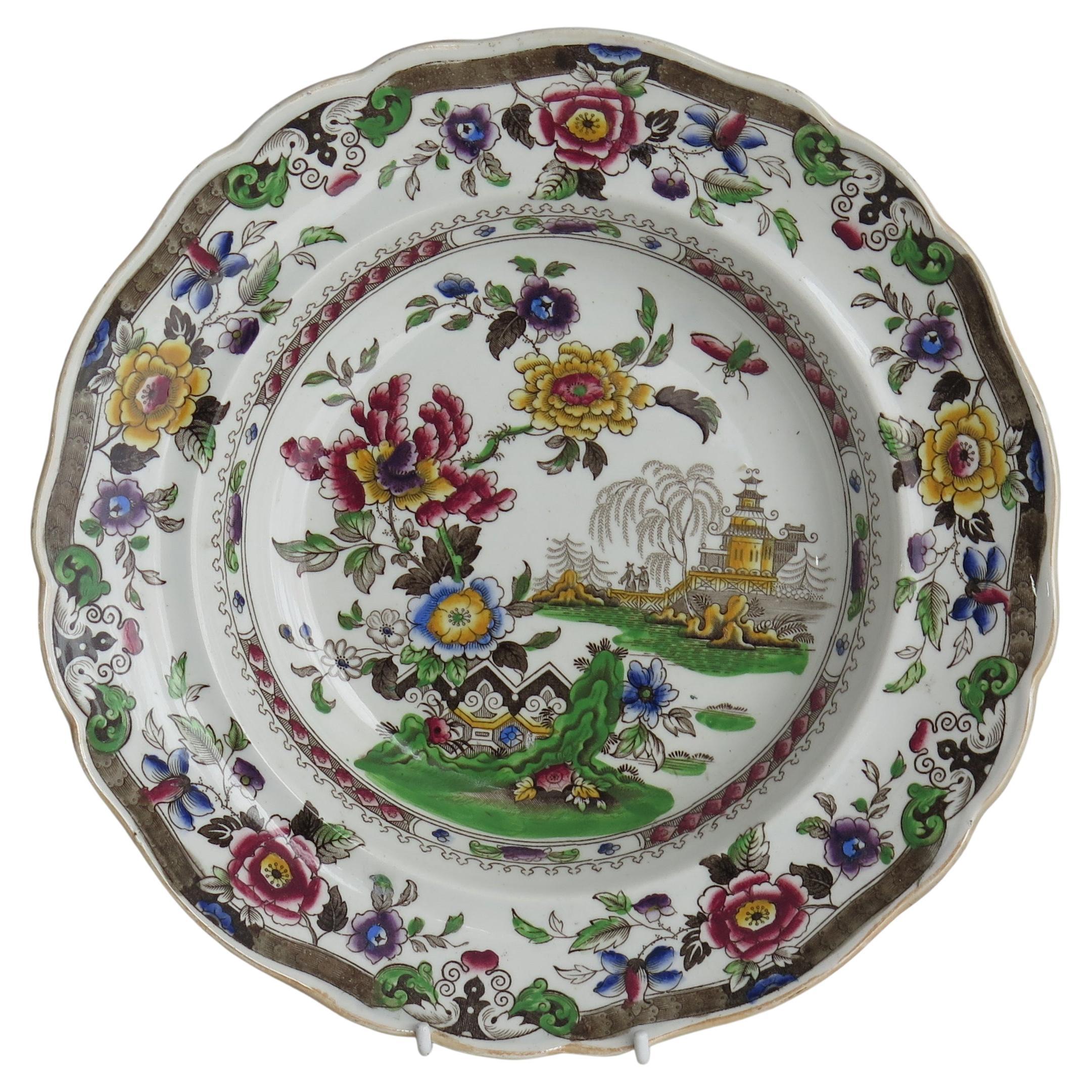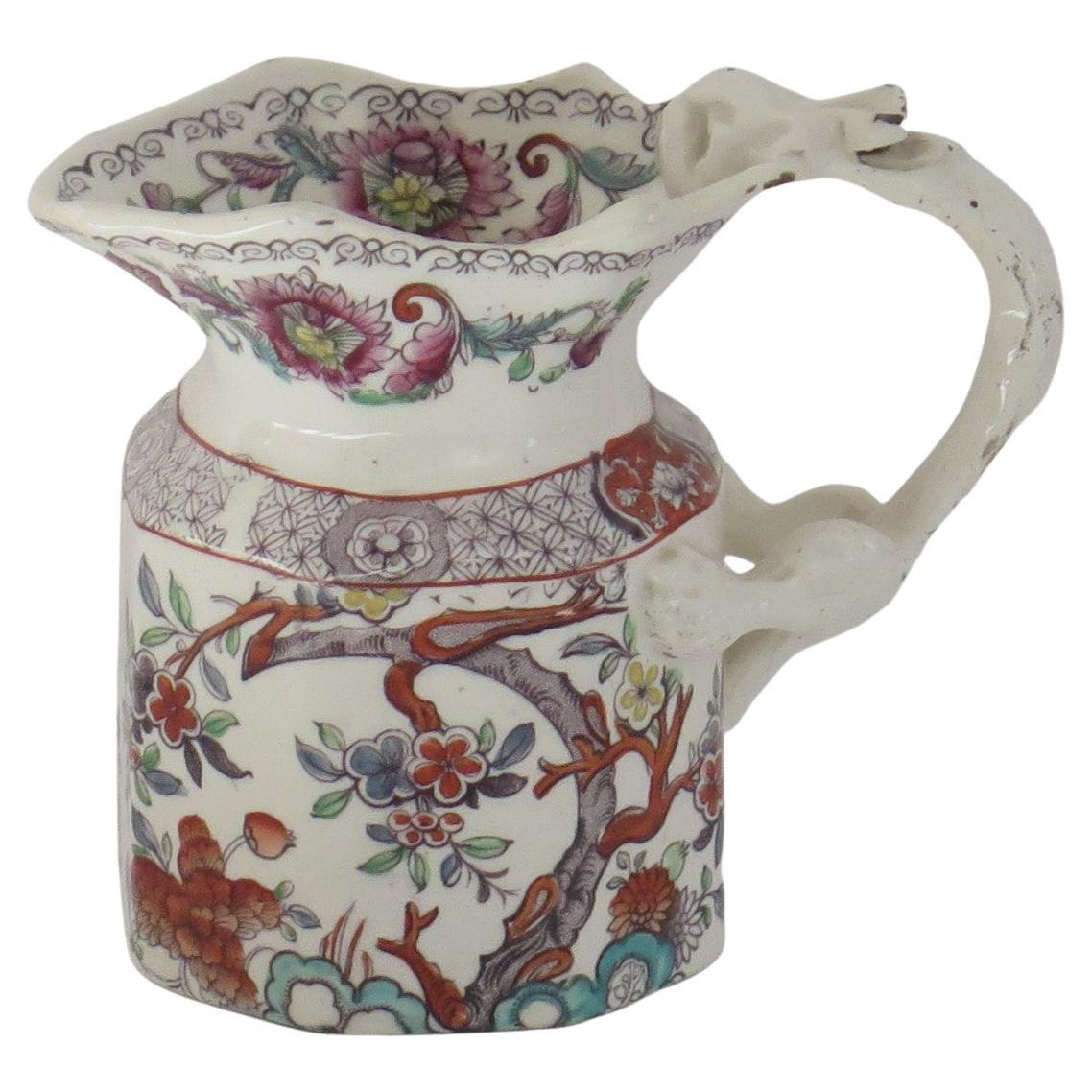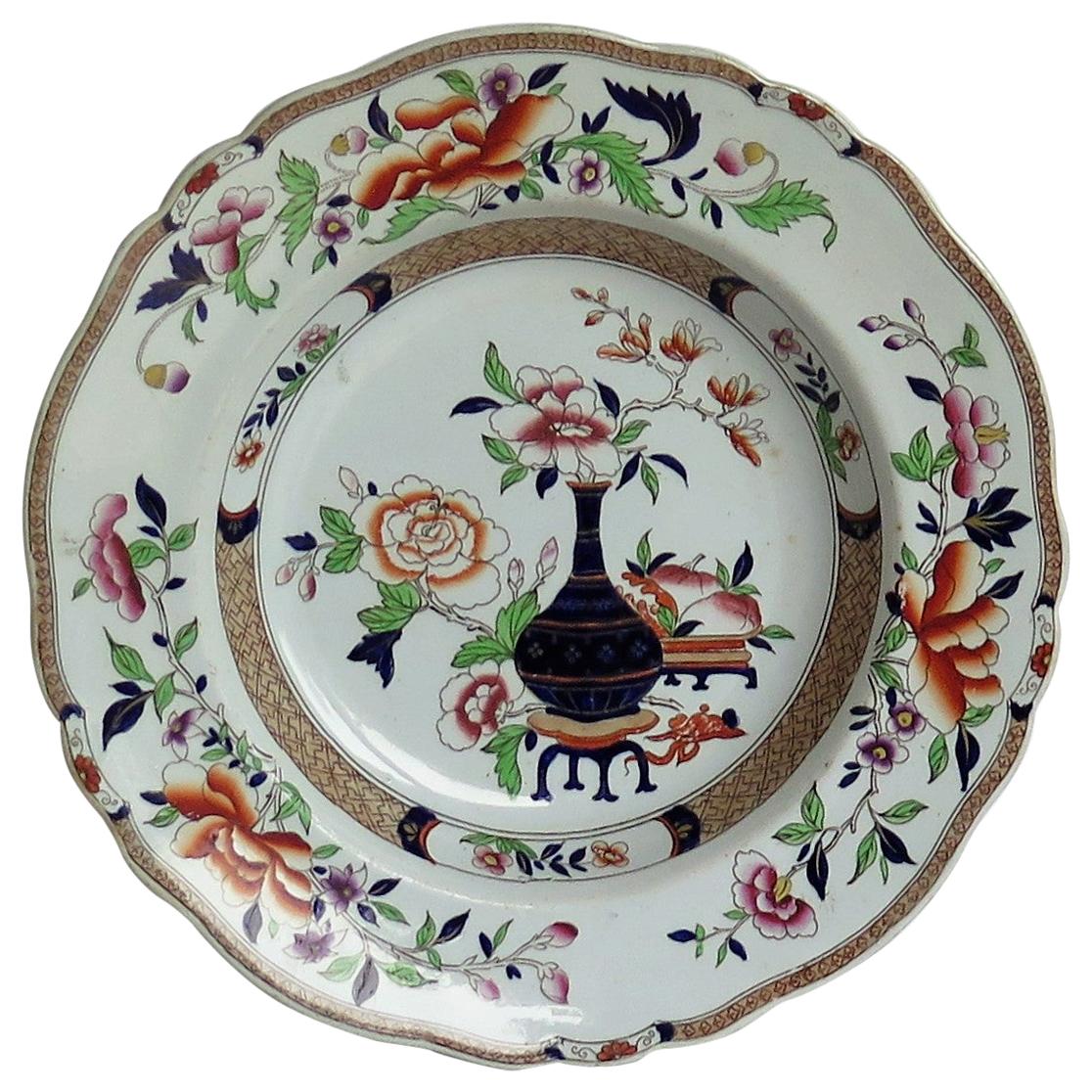Items Similar to Georgian PAIR Soup Bowls by Spode in Blue & White Rome or Tiber Pattern, Ca 1815
Want more images or videos?
Request additional images or videos from the seller
1 of 13
Georgian PAIR Soup Bowls by Spode in Blue & White Rome or Tiber Pattern, Ca 1815
About the Item
This is a beautiful pair of deep plates or Soup Bowls in the blue and white Rome or Tiber Pattern, produced by the Spode factory and made of a type of earthenware pottery called Pearl-ware, in the early 19th century, circa 1815.
The pattern view shows the River Tiber, the Castle of St. Angelo, the Bridge of St. Angelo and St. Peter's with its high dome. To the left of St. Peter's is Trajan's Column, which is misplaced, not appearing from the viewpoint used. Spode introduced the pattern in 1811. Please see Page 362 for more detail in the book; Blue & White Printed Pottery by Coysh & Henrywood, published by The Antique Collectors' Club..
These bowls have very good deep cobalt blue coloring with the quality expected by this factory.
Both pieces are marked with the Spode impressed & printed marks for the period.
Overall a very decorative pair of early Spode blue & white Bowls.
- Creator:Josiah Spode (Manufacturer)
- Dimensions:Height: 1.5 in (3.81 cm)Diameter: 9.75 in (24.77 cm)
- Sold As:Set of 2
- Style:Georgian (Of the Period)
- Materials and Techniques:Pearlware,Glazed
- Place of Origin:
- Period:
- Date of Manufacture:circa 1815
- Condition:Wear consistent with age and use. NO chips, NO Restoration. One old tight base hairline to one Bowl which is not obvious. Bright bold blue colours with very good depth or variation in the blue.
- Seller Location:Lincoln, GB
- Reference Number:Seller: P 19311stDibs: LU990328880662
About the Seller
5.0
Platinum Seller
These expertly vetted sellers are 1stDibs' most experienced sellers and are rated highest by our customers.
Established in 1993
1stDibs seller since 2013
1,256 sales on 1stDibs
Typical response time: <1 hour
Associations
LAPADA - The Association of Arts & Antiques Dealers
- ShippingRetrieving quote...Ships From: Lincoln, United Kingdom
- Return PolicyA return for this item may be initiated within 3 days of delivery.
Auctions on 1stDibs
Our timed auctions are an opportunity to bid on extraordinary design. We do not charge a Buyer's Premium and shipping is facilitated by 1stDibs and/or the seller. Plus, all auction purchases are covered by our comprehensive Buyer Protection. Learn More
More From This SellerView All
- Georgian Plate by Spode in Gilded Bow Pot Pattern Number 2954, circa 1820By Josiah SpodeLocated in Lincoln, LincolnshireThis is a beautiful plate in the Bow Pot pattern, produced by the Spode factory and made of a type of earthenware pottery called Pearl-ware, in the early 19th century, circa 1820. ...Category
Antique Early 19th Century English Chinoiserie Pottery
MaterialsPearlware
- Georgian Hicks & Meigh Ironstone Dinner Plate Pheasant Pattern No.5, Ca 1815By Hicks & MeighLocated in Lincoln, LincolnshireThis is a very good Dinner Plate in the Long Tailed Pheasant pattern No.2, made by Hicks and Meigh of Shelton, Staffordshire, England between 1812 and 1822, probably circa 1815. Thi...Category
Antique Early 19th Century English George III Ceramics
MaterialsIronstone
- Georgian Hicks and Meigh Ironstone Plate in Floral Pattern No.8, Circa 1815By Hicks & MeighLocated in Lincoln, LincolnshireThis is a good ironstone side plate in hand painted floral pattern No. 8, made by Hicks and Meigh of Shelton, Staffordshire, England between 1812 and 1...Category
Antique Early 19th Century English George III Ceramics
MaterialsIronstone
- Georgian Spode Coffee Can Ironstone Kackiemon Pattern 2117, circa 1820By SpodeLocated in Lincoln, LincolnshireThis is a good stone China (Ironstone) coffee can made by the SPODE factory in the early 19th Century, circa 1820. The coffee can is well potted with cylindrical shape and a loop handle with the distinctive Spode kink to it. The piece is beautifully decorated with hand painted enamels in the chinoiserie Kakiemon style, pattern number 2117. It has the Spode Stone China blue printed...Category
Antique Early 19th Century English Georgian Ceramics
MaterialsIronstone
- Early Coffee Cup Blue and White Boy on a Buffalo Ptn probably Spode, circa 1790By Josiah SpodeLocated in Lincoln, LincolnshireThis is a good, very early, rare blue and white coffee cup in the "Boy on a Buffalo" pattern, probably from the factory of Josiah Spode, stoke on Trent, Staffordshire, England, made...Category
Antique Late 18th Century English Chinoiserie Ceramics
MaterialsEarthenware
- Georgian Hicks and Meigh Ironstone Sauce Tureen Floral Pattern No.8, Circa 1815By Hicks & MeighLocated in Lincoln, LincolnshireThis is a good ironstone Sauce Tureen in hand painted floral pattern No. 8, made by Hicks and Meigh of Shelton, Staffordshire, England between 1812 and...Category
Antique Early 19th Century English George III Ceramics
MaterialsIronstone
You May Also Like
- Twelve Spode Neo-Classical Greek Pattern Blue Soup PlatesBy SpodeLocated in Downingtown, PASpode Neo-classical Greek pattern blue soup plates, Refreshment for Phliasian Horseman, Set of twelve (12) Early-19th century The Spode Greek pattern ...Category
Antique Early 19th Century English Georgian Pottery
MaterialsPearlware, Pottery
- Early Spode Red Greek Pattern TileBy Spode, Josiah SpodeLocated in Fort Lauderdale, FLA Neoclassical red transferware tile made by Spode 1806-1810, with the ‘Refreshments for Phliasian Horseman’ pattern. Sir William Hamilton’s Collection of Etruscan, Greek and Roman antiquities, first published in 1766 by Pierre d’Hancarville, was a landmark publication in English design. It intended to disseminate the Antique style through its engravings of Attic pottery. The catalog’s faithful reproductions of Classical vases led British potteries, including Spode, to adapt or even copy the ancient art for modern life. These Spode Greek pattern tiles reflect the major influence of Hamilton’s catalog on English Neoclassicism. The central scene was taken directly from the catalog. This tile can be dated to a narrow window of production in the Spode factory, 1806-1810. During that time, Spode used a technique known as the “Pluck and Dust” method to print in red transfer designs onto creamware. Using this method, source prints were transferred overglaze using tissue imprinted with a very faint rendition of the design outlined in sticky oil. The decorator applied the tissue to the object then carefully “plucked” or pulled it away, leaving the sticky oil design behind. Then, a finely-ground enamel color was “dusted” onto the surface, sticking to any areas that had the oil. A final firing at a low temperature in the enamel kiln made the pattern permanent. The Pluck and Dust technique improved upon bat-printing and enabled larger designers to be transferred. It was short-lived, however, as under-glaze transfer printing soon took over as the preferred method for producing transferwares. Dimensions: 5 in. x 5 in. x 1/4 in. Condition: Excellent. Slight chip to the upper left corner measuring approximately 0.9 cm. in length. Provenance: The Collection of Nancy and Andrew Ramage Jonathan Horne...Category
Antique Early 19th Century English Neoclassical Pottery
MaterialsEarthenware, Creamware
- Wedgwood Creamware Soup Plate with German Ship Decoration.By Josiah WedgwoodLocated in Downingtown, PAThe ship is flying the flag of the last German Emperor of the Holy Roman Empire, Francis II , Circa 1775-1790. The rare Wedgwood creamware plate...Category
Antique 1780s English Georgian Pottery
MaterialsCreamware
- English Blue and White Brown-Westhead, Moore & Co. Valletta Pattern WashbasinBy Brown Westhead MooreLocated in Atlanta, GAAn English blue and white Brown-Westhead, Moore & Co., Valletta pattern washbasin from the late 19th century, featuring a pitcher and its basin. Created by the English manufacturer B...Category
Antique Late 19th Century English Pottery
MaterialsCeramic, Earthenware, Pottery
- Early 19th Century Spode Red Greek Pattern TileBy Josiah Spode, SpodeLocated in Fort Lauderdale, FLA Neoclassical red transferware tile made by Spode 1806-1810, with the ‘Zeus in His Chariot’ pattern. Sir William Hamilton’s Collection of Etruscan, Greek and Roman antiquities, first published in 1766 by Pierre d’Hancarville, was a landmark publication in English design. It intended to disseminate the Antique style through its engravings of Attic pottery. The catalog’s faithful reproductions of Classical vases led British potteries, including Spode, to adapt or even copy the ancient art for modern life. These Spode Greek pattern tiles reflect the major influence of Hamilton’s catalog on English Neoclassicism. The central scene was taken directly from the catalog. This tile can be dated to a narrow window of production in the Spode factory, 1806-1810. During that time, Spode used a technique known as the “Pluck and Dust” method to print in red transfer designs onto creamware. Using this method, source prints were transferred overglaze using tissue imprinted with a very faint rendition of the design outlined in sticky oil. The decorator applied the tissue to the object then carefully “plucked” or pulled it away, leaving the sticky oil design behind. Then, a finely-ground enamel color was “dusted” onto the surface, sticking to any areas that had the oil. A final firing at a low temperature in the enamel kiln made the pattern permanent. The Pluck and Dust technique improved upon bat-printing and enabled larger designers to be transferred. It was short-lived, however, as under-glaze transfer printing soon took over as the preferred method for producing transferwares. Dimensions: 5 in. x 5 in. x 1/4 in. Condition: Excellent. Provenance: The Collection of Nancy and Andrew Ramage Jonathan Horne...Category
Antique Early 19th Century English Neoclassical Pottery
MaterialsEarthenware, Creamware
- Pair White Ceramic Chinese Vases Pots or Table Lamp BaseLocated in Milano, ITA pair of white ceramic Chinese vases circa early 20th century.Category
Early 20th Century Chinese Chinese Export Ceramics
MaterialsCeramic
Recently Viewed
View AllMore Ways To Browse
White Soupers
White Soup
Blue Soup
Georgian Pearl
Georgian Glass Pair
Antique Blue And White Plater
Soup Bowls
Spode Antique Patterns
Antique Spode Patterns
Spode 19th Century
Deep Blue Pottery
Antique Blue Pattern Plates
19th Century Glass Domes
Deep Cobalt Blue Glass
Early Spode
Spode Blue
Cobalt Blue From England
Ca Pottery





